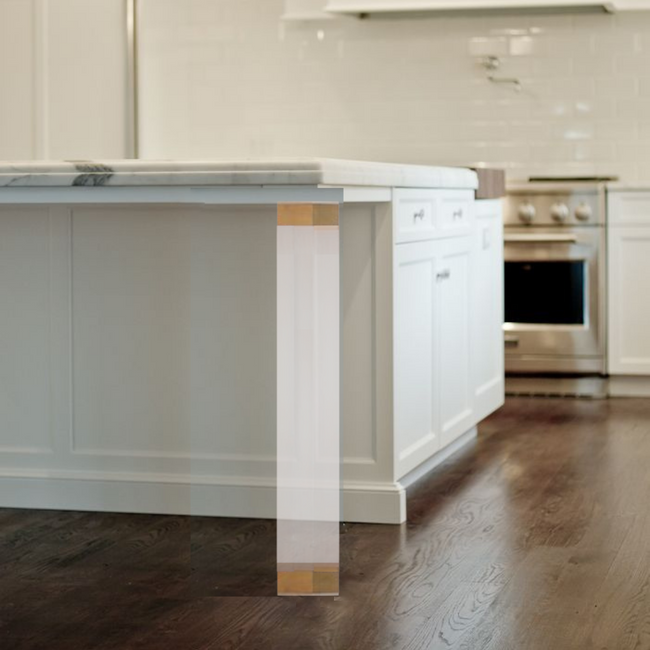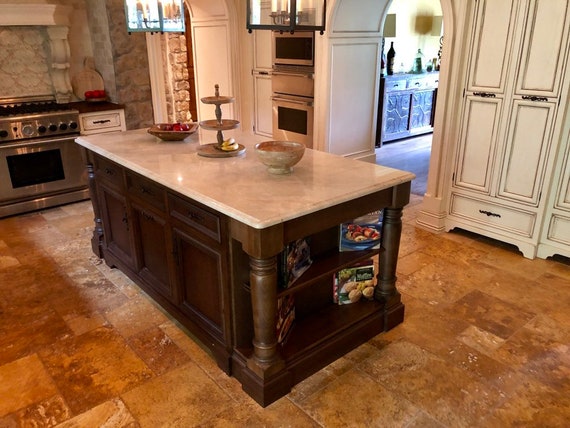Discovering the Vital Features of a Kitchen Area Island Leg for Your Culinary Room
The cooking area island serves as a main center in any type of cooking room, and the option of leg layout is pivotal in boosting both its performance and aesthetic allure. Recognizing the essential features of cooking area island legs-- including material alternatives, style styles, and stability variables-- can dramatically affect the overall experience within the kitchen.
Significance of Kitchen Island Legs
Kitchen area island legs play an essential role in both the performance and looks of a kitchen area room. They not only sustain the weight of the island however also enhance the overall style, contributing to the kitchen's aesthetic appeal. The choice of legs can dictate the style of the kitchen area, be it contemporary, standard, or rustic.
Functionally, robust and appropriately designed legs guarantee security, allowing for the secure usage of the island for various tasks such as food prep work, eating, or enjoyable. Solid legs protect against moving and tottering, offering a trusted surface for day-to-day tasks.
In addition, the height and placement of the legs can influence the convenience level for those seated at the island. A well-considered elevation can suit bar stools or chairs, advertising an inviting atmosphere for events.
In enhancement to these practical considerations, kitchen area island legs can function as a focal factor in the area (kitchen island leg). Attractive or distinctively developed legs can elevate the style aesthetic, making the island a focal point. Therefore, choosing the appropriate kitchen area island legs is necessary for balancing type and function in any kind of culinary space
Product Options for Legs
Choosing the suitable product for kitchen area island legs considerably influences both sturdiness and design. Typical product choices consist of wood, rock, and steel, each offering unique advantages.
Timber is a popular selection because of its heat and flexibility. It can be easily customized to match various decoration designs, from rustic to contemporary. Hardwoods like oak and maple offer outstanding strength and longevity, while softer timbers can be more vulnerable to tear and wear.
Metal legs are favored for their streamlined, modern-day aesthetic. kitchen island leg. Stainless steel and aluminum are not just robust but also immune to rust and deterioration, making them optimal for kitchen area environments. They can develop an industrial appearance and are frequently available in various surfaces to complement various other cooking area aspects
Stone legs, such as granite or marble, add an element of deluxe and stability. While larger than other products, they provide remarkable toughness and can stand up to significant weight. They may need extra assistance to ensure appropriate balance.
Eventually, the option of product must line up with both useful requirements and the general layout vision of the cooking area space, guaranteeing that the island legs enhance both utility and appearances.
Style Designs to Consider
What layout styles should be considered when picking legs for a cooking area island? The choice of leg style considerably influences the total visual of your cooking space. For a modern kitchen, sleek and minimalistic leg styles, such as stainless-steel or geometric forms, can improve the contemporary charm, offering a clean and clean look.
In contrast, traditional cooking areas profit from classic styles such as turned or carved wooden legs, which include warmth and personality. These options commonly include complex information that match classic furnishings. For a rustic ambiance, think about legs made from recovered wood or wrought iron, which bring a natural, natural quality to the room.
If you lean towards an industrial style, robust steel legs with a troubled surface might be suitable, providing an edgy yet innovative touch. Furthermore, farmhouse design kitchen areas can incorporate beefy legs that stimulate a feeling of toughness and homeliness.

Elevation and Security Elements
The elevation and stability of a kitchen area island are important components that directly affect its performance and customer experience. An optimal cooking area island leg should supply enough height to accommodate a range of jobs, from food preparation to laid-back eating. Typically, kitchen area islands stand in between 36 to 42 inches tall, aligning with common counter and bar elevations. This array ensures comfort for individuals while doing numerous tasks, thus enhancing the overall functionality of the room.
Security is similarly important, specifically as kitchen area islands commonly serve as focal factors in culinary settings. The leg's attachment to the island's base have to be safe, ensuring long life and resilience versus the wear and tear of everyday usage.
Personalization and Accessories
Customization options and devices for kitchen area island legs can considerably boost both the aesthetic allure and performance of the room. Homeowners can choose from a variety of products, including steel, stone, and timber, permitting seamless combination with existing kitchen decoration. The choice of surface-- be it an all-natural discolor, repaint, or powder covering-- more personalizes the appearance, ensuring that the island matches the total style theme.
In enhancement to material and coating, homeowners may additionally explore the consolidation of devices such as decorative brackets, flexible feet, or integrated Go Here shelving. Braces can supply additional assistance while adding to a contemporary or rustic visual. Flexible feet are particularly advantageous for unequal flooring, making sure the island continues to be secure and degree, which is essential for both security and functionality.

Final Thought
To conclude, kitchen island legs serve a vital role in giving stability and improving the overall visual of the culinary space. The option of products and design styles adds to both performance and aesthetic appeal, while considerations of elevation and security make certain functional usage. Customization options and accessories can boost the kitchen area island, making it a distinct focal point within the home. Thus, cautious consideration of these features is essential for an efficient kitchen style. next page
The kitchen area island serves as a main center in any type of culinary room, and the selection of leg layout is crucial in improving both its functionality and visual allure. Understanding the crucial functions of cooking area island legs-- consisting of material choices, layout styles, and stability aspects-- can dramatically affect the general experience within the kitchen area.Kitchen area island legs play an important role in both the functionality and aesthetic appeals of a cooking area space.What layout styles should be considered when selecting legs for a kitchen area island?In final thought, kitchen area island legs serve a vital duty in supplying stability and improving the total visual of the cooking room.